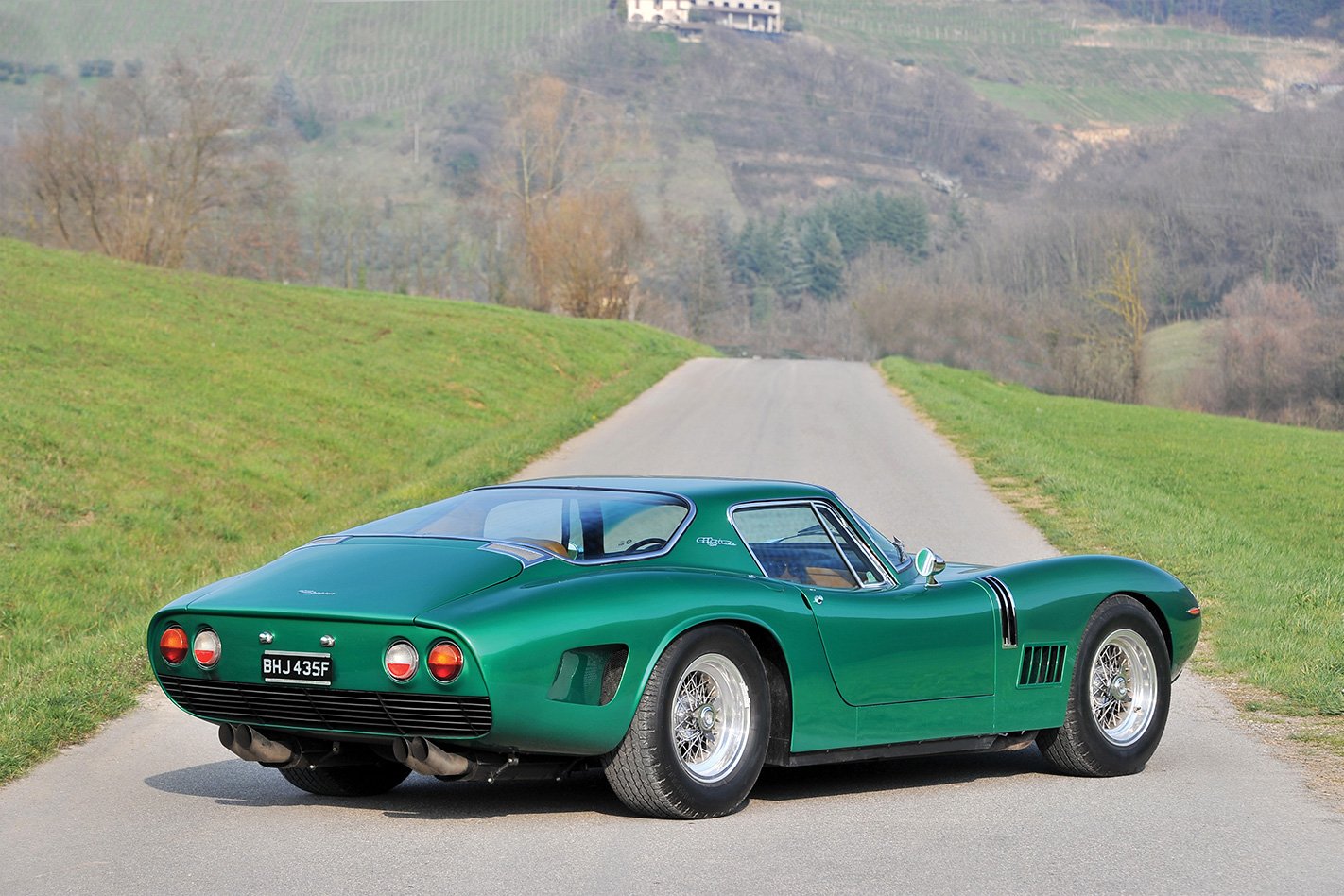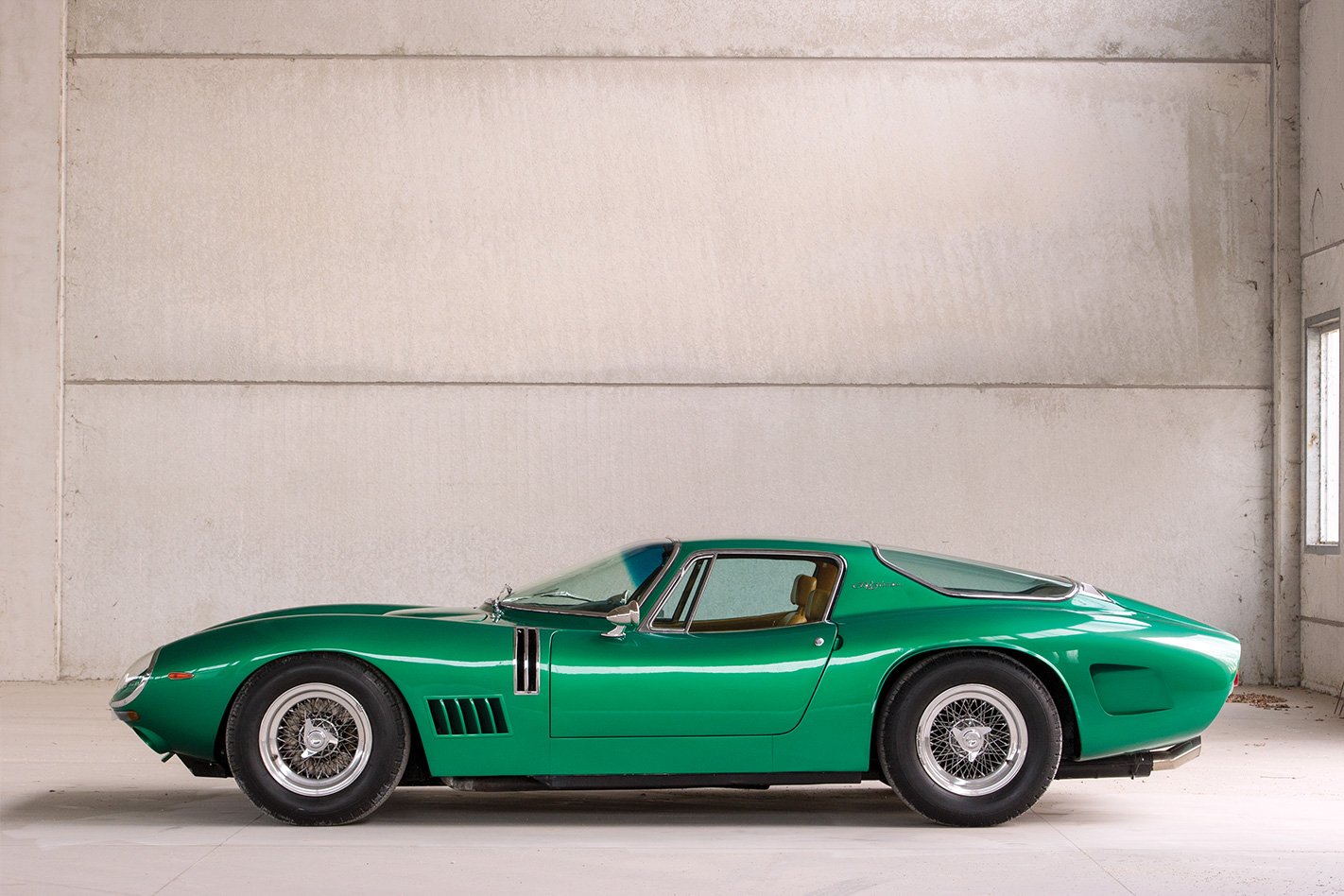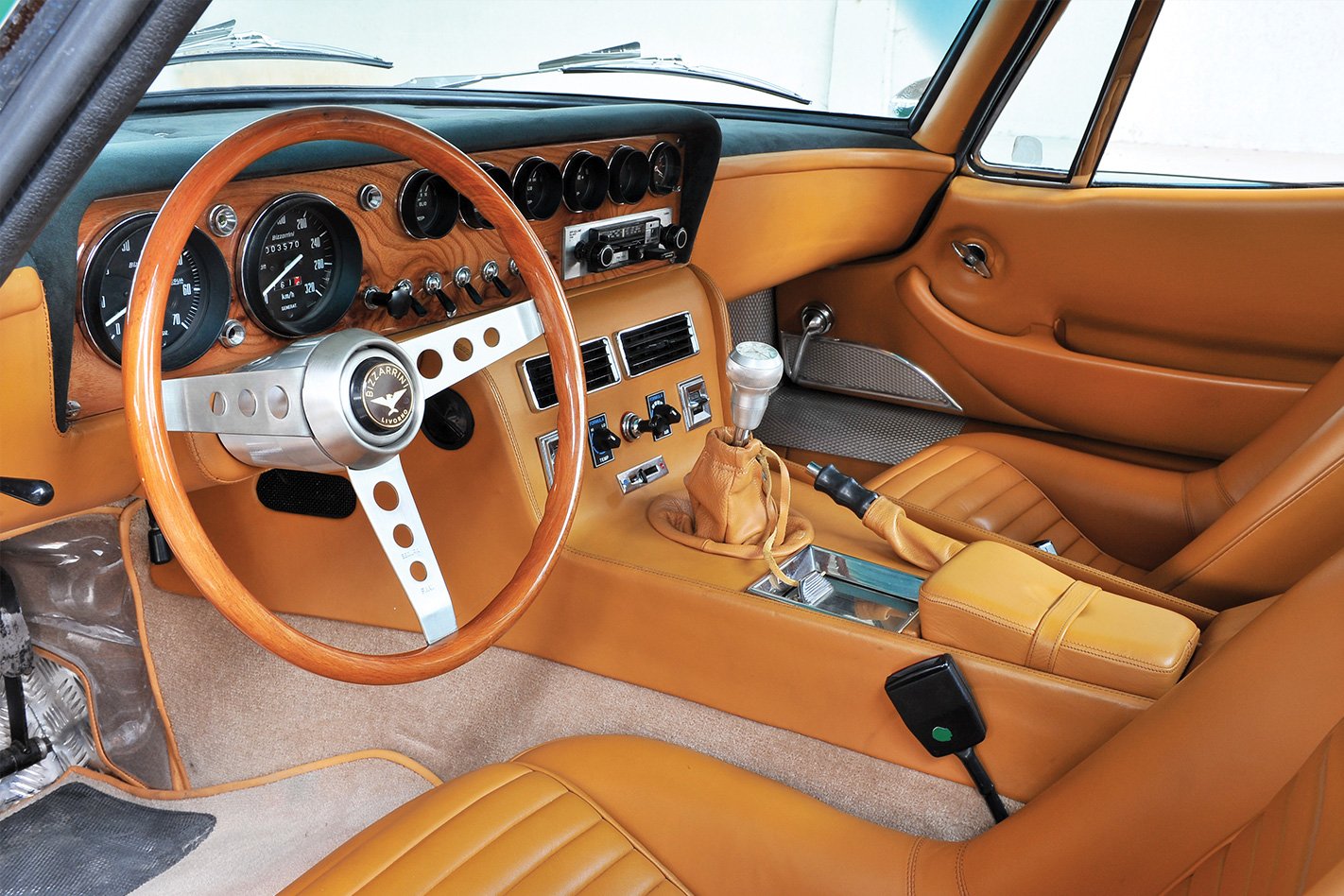IF THE name Bizzarrini still sounds to you like a type of pizza or a fictional Italian supercar from Happy Days, you need educating real fast.
Giotto Bizzarrini was a renaissance man of the Italian supercar scene through the 1960s.
Starting his career as a test driver with Alfa Romeo and then Ferrari, his list of credits spans design and development variously of engines, chassis and bodywork across cars like the Ferrari 250 GTO, the Lamborghini Miura and the Iso Rivolta.

After a brief partnership with fellow ejectee Carlo Chiti, Bizzarrini went freelance. One of his first projects was the 1963 design of Lamborghini’s V12 engine, which would remain in production until 2010.
For all his excellence in designing V12 engines – not to mention the aerodynamics of the Ferrari 250 GTO and the maverick 250 GT ‘Breadvan’ – Bizzarrini turned to easy, reliable Chevrolet 327 small-block power when, in 1963, he designed a gran turismo under his own name, the Bizzarrini 5300 GT.

Launched in 1965, the 5300 used a development of the Grifo’s steel monocoque chassis, but with the Corvette-derived V8 moved 400mm rearward (in comparison with the Grifo A3/L road car) to a true, front mid-engined location. The Bertone-styled bodywork stood just 1090mm high.
Reportedly between 115 and 133 Bizzarrini 5300 GT Stradas were built from 1965 to 1968, the majority of those having alloy bodies, but an unknown number being produced in steel. The most prized of all 5300 GTs are the sole targa and two Spyders produced.

Giotto Bizzarrini’s fabricated steel monocoque chassis, a shortened version of that developed for the Iso Rivolta four-seater, shared its 2450mm wheelbase with the Iso Grifo. From it hung a double-wishbone front and de Dion rear suspensions, with coil springs. The body was a semi-monocoque, riveted to the chassis, all helping to keep weight down to 1252kg.

The Chevrolet Corvette-sourced 5359cc (327 cubic inch) small-block V8 offered outputs of 272kW and 510Nm (in Strada spec), via a four-speed manual gearbox. Corsa racers swapped a single Holley for four Webers and gained 30kW. Rearward location is evident in the long plumbing to reach the radiator; the distributor is reached via the dashboard.

The cockpit speaks volumes about the handcrafted, 1960s Italian supercar. Volume is also the keyword in terms of the engine and gearbox, and the noise it creates. Heat was also an issue. It was all worth it for the brutal beauty of the styling, and the reliable, hulking performance, with 0-100km/h in just over six seconds and a top speed of about 250km/h.






